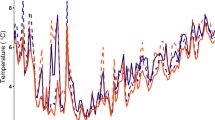Abstract
Geese often forage on mid-winter foods that fail to satisfy daily energy needs, but they may do so to acquire other nutrients, such as nitrogen. We tested this hypothesis by evaluating nitrogen budgets, namely the balance of nitrogen income against expenditure, of wintering Lesser White-fronted Geese Anser erythropus feeding at two sites within East Dongting Lake, China, where they could and could not balance daily energy budgets. Geese could balance nitrogen budgets in energy-rich habitats but were less able to do so in habitats where they failed to balance energy budgets. This study presents the first full nitrogen budget for a wintering goose species, and suggests that, rather than acting as a source of nitrogen, use of energy-poor but undisturbed habitats may represent a refuge from human disturbance at other habitats.
Zusammenfassung
Wechseln zu energiearmer Nahrung zugunsten der Stickstoffaufnahme? Bei überwinternden Zwerggänsen in China ist das nicht der Fall
Zur Mitte des Winters ernähren sich Gänse häufig von Futterpflanzen, mit denen sie zwar nicht ihren täglichen Energiebedarf decken können, die ihnen aber zur Versorgung mit anderen Nährstoffen wie zum Beispiel Stickstoff dienen. Wir überprüften diese Hypothese, indem wir die Stickstoffbilanz in Form des Verhältnisses zwischen Stickstoffaufnahme und Stickstoffverbrauch bei überwinternden Zwerggänsen Anser erythropus untersuchten, die auf zwei Flächen am östlichen Dongting-See in China Nahrung suchten, wobei sie auf einer von diesen ihre Energiebilanz ausgleichen konnten, auf der anderen dagegen nicht. Die Gänse konnten ihren Stickstoffhaushalt in energiereichen Habitaten ausgleichen; dies gelang ihnen aber weniger gut in Lebensräumen, in welchen sie keine ausgewogene Energiebilanz erreichten. Diese Studie stellt die erste vollständige Stickstoffbilanz für eine überwinternde Gänseart dar, und die Ergebnisse sprechen eher dafür, dass energiearme aber störungsfreie Habitate als Rückzugsgebiete von Störungen durch Menschen an anderen Orten genutzt werden, als dass sie eine Rolle als Stickstoffquelle spielen.


Similar content being viewed by others
References
Allen LR, Hume ID (2001) The maintenance nitrogen requirement of the zebra finch Taeniopygia guttata. Physiol Biochem Zool 74:366–375
BirdLife International (2010) Lesser White-fronted Goose Anser erythropus. BirdLife International species factsheet. Available at http://www.birdlife.org/datazone/speciesfactsheet.phd?id=377. Accessed 14 December 2011
Bucher EH, Tamburini D, Abril A, Torres P (2003) Folivory in the white-tipped plantcutter Phytotoma rutila: seasonal variations in diet composition and quality. J Avian Biol 34:211–216
Cong P, Wang X, Cao L, Fox AD (2012) Within-winter shifts in Lesser White-fronted Goose Anser erythropus distribution at East Dongting Lake, China. Ardea 100:5–11
Ely CR, Raveling DG (2011) Seasonal variation in nutritional characteristics of the diet of greater white-fronted geese. J Wildl Manag 75:78–91
Evans PR, Davidson NC, Uttley JD, Evans RD (1992) Premigratory hypertrophy of flight muscles: an untrastructural study. Ornis Scand 23:238–243
Felton GW (1996) Nutritive quality of plant protein: sources of variation and insect herbivore responses. Arch Insect Biochem Physiol 32:107–130
Fox AD, Kahlert J (1999) Adjustments to nitrogen metabolism during wing moult in Greylag Geese, Anser anser. Funct Ecol 13:661–669
Giraudoux P (2012) pgirmess: data analysis in ecology
Hohman WL, Jefferies RL, Gordon DH (1992) Ecology and management of post-breeding waterfowl. In: Batt BDJ, Afton AD, Anderson MG et al (eds) Ecology and management of breeding waterfowl. University of Minnesota Press, Minneapolis, pp 128–189
Houston AI, Higginson AD, McNamara JM (2011) Optimal foraging for multiple nutrients in an unpredictable environment. Ecol Lett 14:1101–1107
Klaassen M, Nolet BA (2008) Stoichiometry of endothermy: shifting the quest from nitrogen to carbon. Ecol Lett 11:785–792
Klasing KC (1998) Comparative avian nutrition. CAB International, London
Marquardt RR (1983) A simple spectrophotometric method for the direct determination of uric acid in avian excreta. Poult Sci 62:2106–2108
Mattson WJ (1980) Herbivory in relation to plant nitrogen-content. Annu Rev Ecol Syst 11:119–161
Mayntz D, Raubenheimer D, Salomon M, Toft S, Simpson SJ (2005) Nutrient-specific foraging in invertebrate predators. Science 307:111–113
Piersma T, Lindstrom A (1997) Rapid reversible changes in organ size as a component of adaptive behaviour. Trends Ecol Evol 12:134–138
R Development Core Team (2011) R: A language and environment for statistical computing. R Foundation for Statistical Computing, Vienna
Robbins CT (1993) Wildlife feeding and nutrition, 2nd edn. Academic, New York
Sedinger JS (1997) Adaptations to and consequences of an herbivorous diet in grouse and waterfowl. Condor 99:314–326
Wang X, Fox AD, Cong P, Barter M, Cao L (2012) Changes in the distribution and abundance of wintering lesser white-fronted geese Anser erythropus in eastern China. Bird Conserv Int 22:128–134
Wang X, Fox AD, Cong P, Cao L (2013) Food constraints explain distribution of wintering Lesser White-fronted Geese Anser erythropus in China. Ibis 155:576–592
White TCR (1993) The inadequate environment. Springer, Berlin
Acknowledgments
We thank East Dongting Lake National Nature Reserve for permission to work in the nature reserve and assistance with field work, and Liu Jing, Yang Xiuli, Yang Wei and Yu Xiaoxi for assistance. We are grateful to Eileen Rees and one anonymous referee for constructive and insightful comments on an earlier draft of the manuscript. The study was supported by the National Natural Science Foundation of China (Grant No. 31071941).
Conflict of interest
The authors declare that they have no conflict of interest.
Author information
Authors and Affiliations
Corresponding author
Rights and permissions
About this article
Cite this article
Wang, X., Fox, A.D., Zhuang, X. et al. Shifting to an energy-poor diet for nitrogen? Not the case for wintering herbivorous Lesser White-fronted Geese in China. J Ornithol 155, 707–712 (2014). https://doi.org/10.1007/s10336-014-1056-6
Received:
Revised:
Accepted:
Published:
Issue Date:
DOI: https://doi.org/10.1007/s10336-014-1056-6




